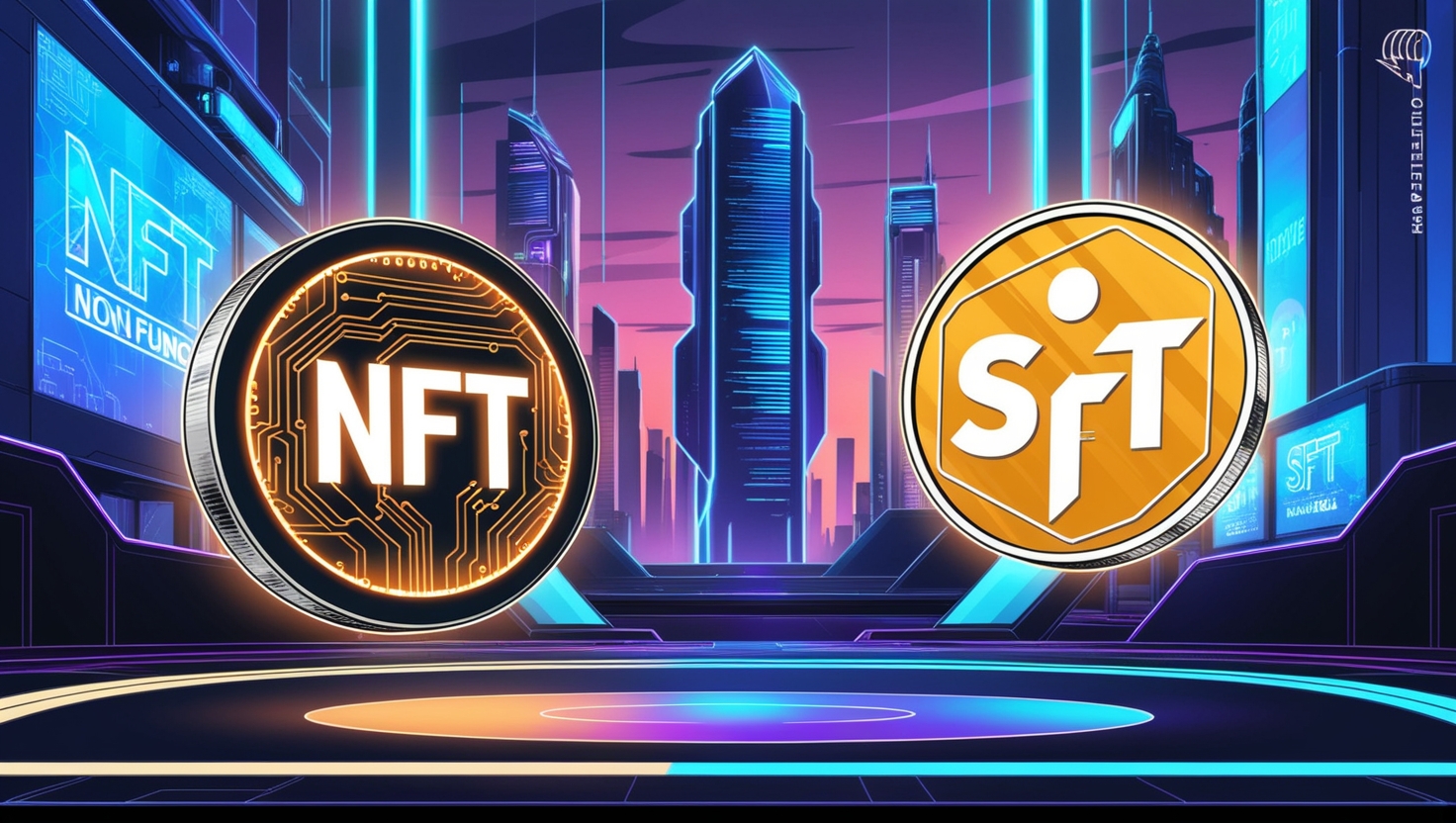NFT vs SFT – NFTs (Non-Fungible Tokens) and SFTs (Semi-Fungible Tokens) are two types of blockchain-based digital assets, but they serve different purposes and have distinct characteristics. Here’s a comparison to help you understand their differences:
1. Non-Fungible Tokens (NFTs)
- Definition:
NFTs are unique digital assets that represent ownership of a specific item or piece of content. Each NFT has a distinct identifier, making it one of a kind. - Key Features:
- Uniqueness: Each token is unique and cannot be replaced or exchanged on a 1:1 basis with another token.
- Indivisibility: NFTs are typically indivisible (you can’t own a fraction of an NFT like you can with cryptocurrencies).
- Metadata: NFTs often include metadata such as artwork, game assets, music, or other unique digital content.
- Use Cases:
- Digital art
- Collectibles
- Gaming assets (unique weapons, skins)
- Real estate (tokenized plots of land)
- Blockchain Standards:
Common standards include ERC-721 (Ethereum) or similar standards on other blockchains (e.g., BEP-721 on Binance Smart Chain).
2. Semi-Fungible Tokens (SFTs)
- Definition:
SFTs are tokens that start as fungible but can become non-fungible after a certain event or use. They combine features of fungibility and non-fungibility, making them more versatile. - Key Features:
- Fungibility: Initially, SFTs are identical and interchangeable, like fungible tokens (e.g., game tickets or in-game items of the same type).
- Non-Fungibility Transition: After being used or partially redeemed, SFTs can gain unique properties, becoming non-fungible.
- Divisibility: Some SFTs can be partially transferred or used, depending on their design.
- Use Cases:
- Event tickets (fungible before the event, unique after as a collectible)
- Gaming items (fungible when identical, unique when upgraded or personalized)
- Tokenized assets with variable value (e.g., vouchers, gift cards)
- Blockchain Standards:
The most common standard is ERC-1155 (Ethereum), which supports both fungible and non-fungible tokens within the same smart contract.
Comparison Table:
| Feature | NFT (Non-Fungible Token) | SFT (Semi-Fungible Token) |
|---|---|---|
| Fungibility | Always non-fungible | Starts fungible, becomes non-fungible |
| Uniqueness | Each token is unique | May become unique after certain conditions |
| Divisibility | Indivisible | Can be divisible or partially usable |
| Use Cases | Art, collectibles, real estate | Tickets, vouchers, in-game items |
| Blockchain Standard | ERC-721, BEP-721 | ERC-1155, BEP-1155 |
| Examples | Digital art pieces, 1/1 game skins | Event tickets, tokenized vouchers |
Which Should You Choose?
- Use NFTs when uniqueness and individuality matter (e.g., art, collectibles).
- Use SFTs for assets that may start as identical but need flexibility to transition into unique items (e.g., redeemable tokens or in-game assets).
Both NFTs and SFTs play crucial roles in expanding the possibilities of blockchain technology, catering to different needs and applications! 🚀










